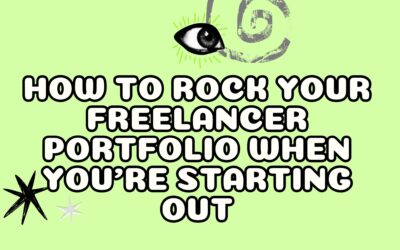How do you all feel about pitching? Good? Bad? When I first started freelancing I was absolutely terrified of pitching. Partly because I had no idea how to create a perfect pitch, and partly because I was convinced someone was going to laugh in my face (via email, of course).
The truth is, once you learn how to create the perfect pitch and start putting yourself out there it gets so much easier. Just like anything, really – practice makes perfect.
That being said, there are some ways you can really up your pitching game and make your proposals stand out. In fact, I’ve had a number of clients pat me on the back for my “excellent” pitches (toot toot).
I send out a considerable amount of pitches every week, to publications, to brands who have posted on jobs boards, to potential clients. Seriously loads of them. And, over time, I’ve figured out what does and doesn’t work.
As freelancers, we kind of rely on our ability to create the perfect pitch. It’s so, so important, right? If we don’t know how to pitch and do it badly, we don’t get as many jobs, which means we can’t pay the bills, which means, well, you get the gist of it.
If there’s one thing we should work at to make sure we ace it every single time, it’s creating the perfect pitch.
But it’s not simply a case of knowing what to include and how to write compelling paragraphs that make brands scream “her! We need her!”
It’s also knowing what to leave out. Kind of like the negative space in a design piece.
Knowing what to leave out is almost as important as knowing what to include, because waffling on for too long or making one tiny mistake could be all it takes to switch someone off.
So, with such a limited amount of time to impress, what pitching practices can we sweep under the carpet?
How to Create the Perfect Pitch by Ditching These Useless Practices
1. Not using names
If you walk down the street and see an acquaintance, it would be kinda weird if they waved and said “Hello Sir/Madam,” or “Hi whom it may concern.”
These aren’t our names! Little secret: everyone has a name. When you use a name in your pitch, you instantly forge a connection with the recipient.
Why? Because when someone uses our name it makes us feel good. It makes us feel like they’re really listening, and like they really care.
When you don’t use the editor or CEO (or whoever)’s name, you instantly put distance between yourself and them.
But I can’t find their name! I hear you cry. Yes, this happens from time to time. If you’ve really dug as deep as you can and you come up blank when it comes to a name, you can either a) send and email/call up the company to ask for it or b) insert a simple “hi there”, instead.
No, “hi there” isn’t the perfect replacement, but it’s considerably better than Sir/Madam or Whom it May Concern.
2. Being too Formal
Unless you’re applying for a seriously formal position, you can drop all the long words and confusing sentences.
If you’re pitching someone, it’s likely they’re receiving hundreds of other pitches aside from yours, so don’t make it difficult to wade through all the jargon.
In fact, they’re much more likely to read your entire pitch if you write it like you speak. Why? Firstly, because it’s ten times easier to read than a pitch filled with complex sentences and formal language, and secondly, because they can imagine you speaking to them as if you were right there with them.
Remember we talked before about creating connections? This is so important when creating the perfect pitch, because not only do brands and clients go on who has the most experience, but they make selections based on who fits in well with the company and who would be easy to work with.
3. Not Showing Your Value
When I first started freelancing, my pitches were simply a place where I reeled off all the brands I’d worked for and bragged about all my accomplishments so far.
I mean, that’s all well and good, but what about the brand you’re pitching to? It’s great that you worked with X and wrote Y, but how does that help the brand you’re pitching to? How does that translate into their terms?
One of the biggest mistakes freelancers make during the pitching process is focusing too much on themselves and not showing the brand how that experience equals value.
Instead of reeling off all these super-duper clients you’ve worked for, take two things you’re proud of doing in your career and show how the skills you learnt and the results you garnered are relevant to the brand in question.
4. Being Too Vague
Check out this example of a really not perfect pitch:
Hi there,
My name is Lizzie and I’m an experienced freelance writer who enjoys creating content about travel. I’ve written for tons of lifestyle brands over the past four years and I always produce great quality writing.
I’m passionate about travel and always stick to deadlines. I think I’d be a great fit for your writing team because I’m reliable, hardworking, and skilled at writing.
Looking forward to hearing from you,
Lizzie
Bleurgh, bleurgh, bleurgh. So generic. You could take out my name and put your name in there, or anyone else’s for that matter.
Being generic will get you absolutely nowhere when pitching. You have a few seconds to stand out, so go into detail, use specific examples and, whatever you do, don’t use the words “hardworking”, “reliable”, and “passionate.”
One word: overdone.
5. Following a set template
Okay, there are hundreds of pitching templates out there that are supposed to provide some kind of structure to your perfect pitch.
In reality? They make everything uniform and boring (there are a few exceptions). The best way to make yourself stand out and to show off your skills is to pitch in a way that’s relevant to the job.
For example, I once applied for a writing job where I would be putting together fact-based lists about interesting topics. Instead of starting with my experience, listing who I worked with, and following up with how I could help the brand, I structured my pitch in a list, with headings, numbers, and bullet points.
Guess what? I got the job. They loved that I’d moulded my pitch to fit their style, and it showed I understood exactly what they were looking for, their voice, and their audience.
6. Spending hours researching the brand
I know I’m going to get a few head shakes here, but hear me out. I fully agree that you need to know the brand you’re pitching to. You need to know who their audience are, what message they want to send out, and how they want to send out that message.
What you don’t need to know is what year they opened, who owned them when and how, and any other trivial information that’s really not relevant to what you’re pitching.
It’s one thing to reel off a quick sentence that shows you understand what they’re all about, and completely another thing to write an essay on their history after spending hours reading their backstory.
Not only does it waste your valuable time, but it’s also slightly creepy, right?!
Creating the perfect pitch isn’t the easiest thing in the world, but with a bit of practice it can become second nature in no time at all.
Your turn!
Do you follow a specific structure or format to create the perfect pitch? What’s the one thing you always try to do when reaching out? Share in the comments below!









Good posts with excellent points. I especially like the show your value point. Why should anyone care unless they know how you can help them?
Thanks Chris! And EXACTLY, showing your value is probably the most important thing you can do when pitching.
The name thing has always gotten to me. Ive always been so fruatrated if I didn’t know their name. This idea feels a lot more natural 🙂
Kristin Cook recently posted…Happy Thanksgiving From The Peculiar Treasure!
Yes, the name thing is a kicker, right?! Thanks for stopping by Kristin 🙂
These are really good ideas, and some I am guilty of doing. I will be revising the way I pitch people, thanks!
Emily, Our house now a home recently posted…Holiday Gift guide & Giveaway – for the home decor obsessed!
Hope they’re useful for you, Emily! Thanks for stopping by 🙂
These are all really great pitch ideas! I will definitely be keeping these in mind next time I’m sending out my next blog pitch! Right on point!
Glad they’re useful for you!
Great tips! I haven’t pitched to many brands yet, but I’m going to start doing it more, so this was really helpful.
Shann Eva recently posted…Thankful for Awareness
Awesome Shann! Good luck with the pitching – I’m sure you’ll be great!
I love these tips, and your blog! Really awesome tips for the new and even established freelancer.
Thank you so much Nancy!
Most advertisers automatically think oof eBooks whereas brainstorming for lead magnets.
Kerry recently posted…Kerry
Lizzie, you’re so right about being vague. It’s important to put ourselves in the other person’s shoes. The last thing they need is a generic response for something they have specific needs for. Great post!
So true, Vanessa! This is something so simple, but it can change the WHOLE pitching process.